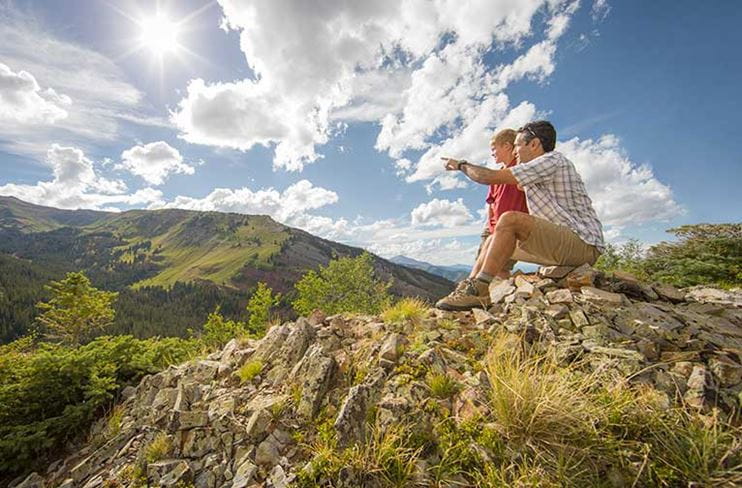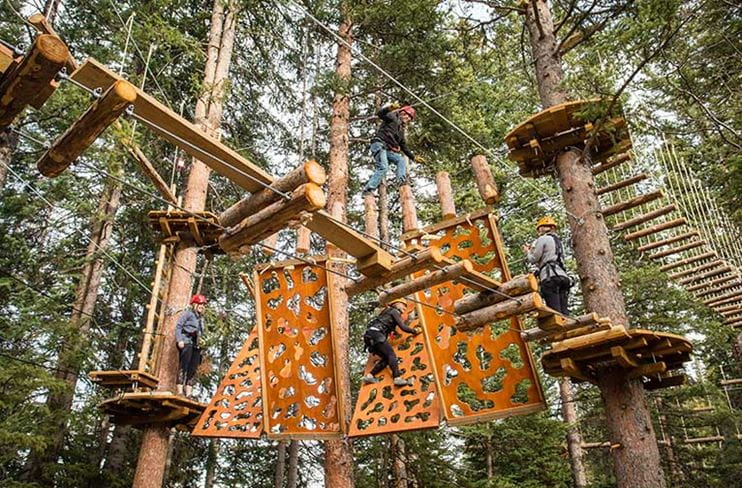From the second pass, Frigid Air, Fravert Basin can be seen below. The trail descends through an alpine field and enters a spruce forest heading toward the North Fork of the Crystal River. Along the river, there are several campsites (always remember to camp at least 100 feet from the stream). After another 1.5 miles, the trail begins a series of steep switchbacks adjacent to the stream—also a stunning waterfall with high water.

Top Aspen Hike: The Four Pass Loop

Runners often go counterclockwise, so they can get the two big climbs out of the way early on while backpackers and hikers generally travel clockwise.
Getting There And Back
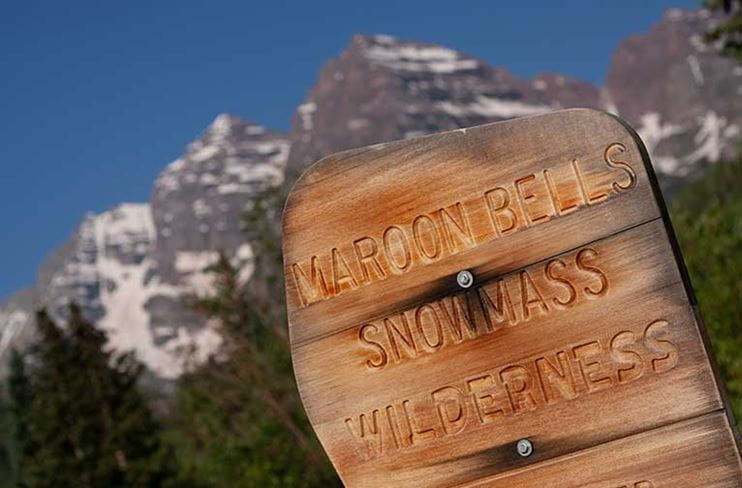
The trailhead starts at Maroon Lake and the entrance to the Maroon Bells-Snowmass Wilderness Area. The protocols for parking have changed from previous years—reservations are now required for shuttles to Maroon Lake and for overnight parking. You can reserve a parking space for vehicles up to 20 feet for $10, or for free with the America the Beautiful and the Maroon Bells Annual Passes. You can also take a shuttle—as a roundtrip or one-way—which leaves from Aspen Highlands Village multiple times a day and also requires a reservation.
Be sure to make your reservations in advance as spot fill up quickly!
On The Trail
The hike starts at 9,580-feet at the Maroon Lake trailhead with the Maroon Bells front and center. The first 1.8 miles to Crater Lake climbs through giant aspen groves and pines. Because this part of the wilderness area provides access points to many of the surrounding 14ers and different trails around the iconic Maroon Bells, it can be very crowded. However, crowds normally dissipate after Crater Lake.
Runners often go counterclockwise, so they can get the two big climbs over Buckskin Pass and Trail Rider Pass out of the way early on before going over Frigid Air third, creating less of a climb up to the final pass, West Maroon, at the end of their big day. Backpackers generally travel clockwise, the most common route, gaining some of the best views in the later part of their trip.
Going clockwise, the long yet moderate climb up West Maroon Creek is stunning. The trail meanders along the creek before popping into high-alpine tundra above the tree-line. West Maroon Pass is known for some of the most breathtaking and colorful wildflowers in the area, especially from mid-July to August. The last mile to the first pass is a set of steep switchbacks, but the view at the top is the reward. There are also some campsites in this area.
From here, the trail descends quickly and in one mile, intersects with Frigid Air Pass. Take a right (other hikers will continue to Crested Butte by staying on the main trail) and ascend for about one mile, and Frigid Air Pass can be seen high above, reached by a series of steep switchbacks.
To Fravert Basin
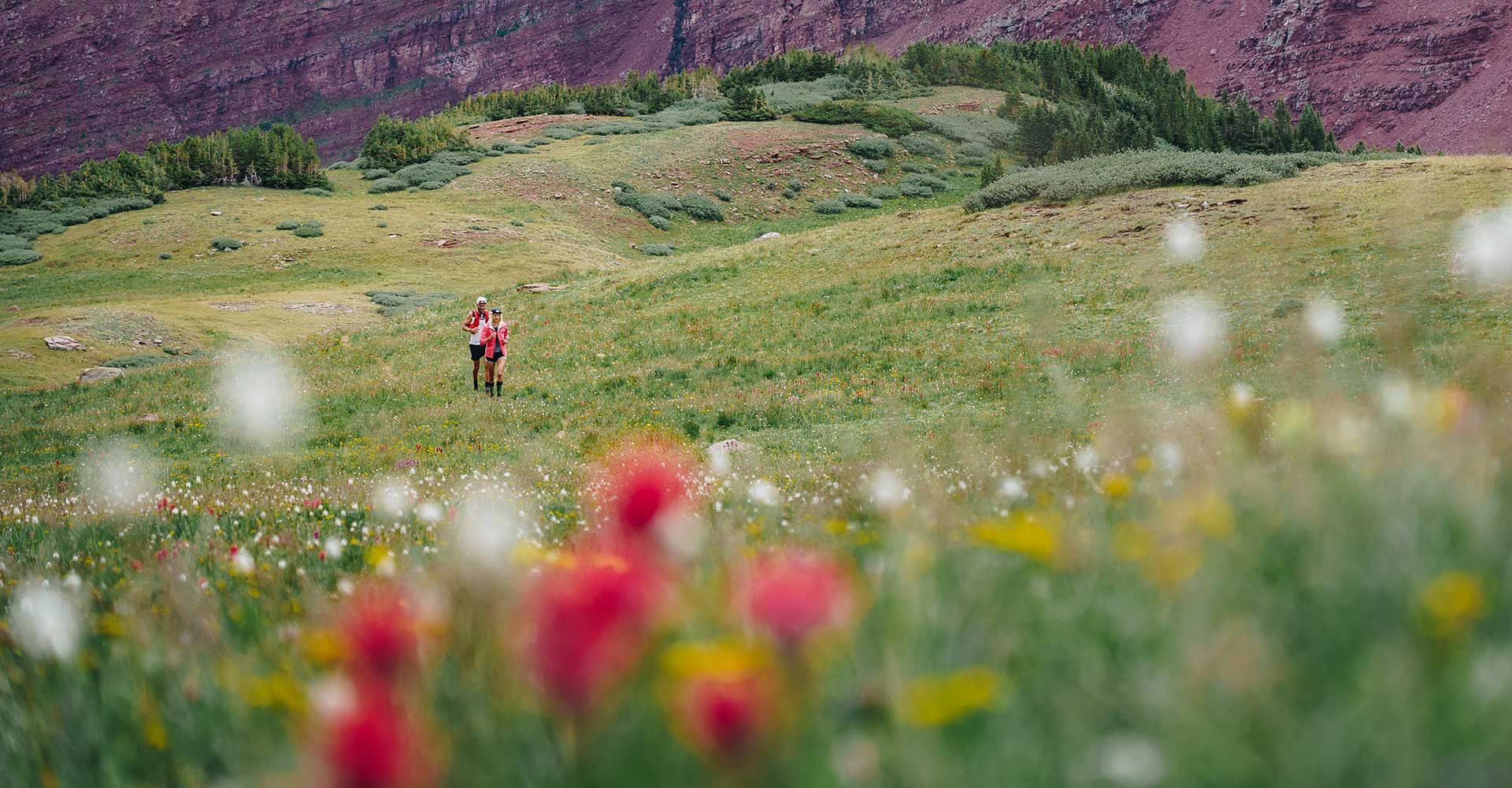
Flowers galore in the Maroon Bells-Snowmass Wilderness
A breathtaking descent delivers hikers to Snowmass Lake. Opt to camp at the many sites here, or continue on the loop by getting on the Maroon-Snowmass Trail and heading toward Buckskin Pass. After crossing Snowmass Creek, the trail ascends to the final pass. There is some camping about halfway up here—keep in mind there is nothing until the other side of Buckskin Pass in the Minnehaha Gulch area. At the top of Buckskin Pass at about 12,000 feet, the views are spectacular; the Maroon Bells share the ridge and Pyramid Peak can be seen across the valley. And then, as they say, it’s all downhill from there, until you return to Crater Lake and back down to the Maroon Lake trailhead.
Overnight Permits
For overnight trips outside of these areas, free self-registration is required. For more information, see here.
Quick Tips
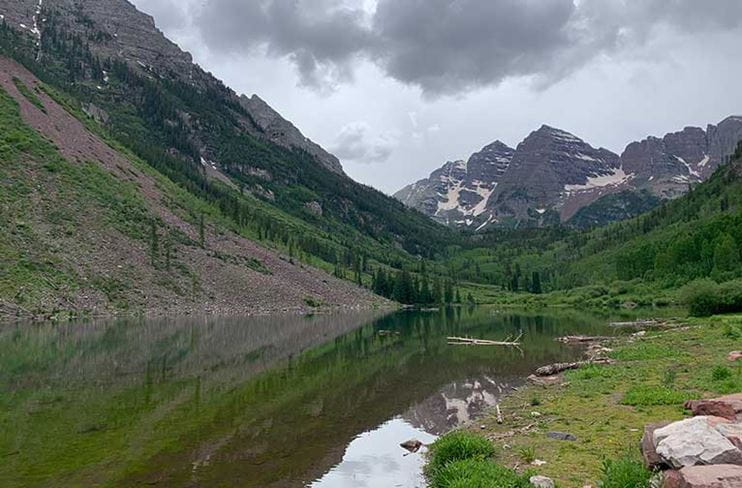
Thunderstorms
Plan hikes early in the day to avoid afternoon thunderstorms. Remember to pack appropriately and be prepared for all conditions and events.Leave No Trace
Don’t leave anything behind. This is a fragile high alpine ecosystem and is already suffering because of overuse. Pack out all trash, and bury human waste 6–8 inches deep and at least 100 feet away from the trail.Dogs
Dogs are permitted but must be leashed, and you must carry out all dog waste. This is a strenuous hike and should only be attempted dogs (and people!) with backpacking experience.Bears
Bear activity is common in this area. Certified bear-proof containers are required for overnight trips, so be sure all your food, drinks, and cooking utensils fit in your canister before you depart.Stream and Snowfield Crossings
Stream crossings can be dangerous during runoff periods. Consider bringing waterproof shoes to cross streams and make sure to unbuckle your pack so it won’t weigh you down if you fall. Depending on how early in the season you're hiking, there can also be snowfields to cross, so be prepared if you feel you’ll need hiking poles or microspikes for your boots or running shoes. You can check trail conditions and recent reviews on sites like All Trails to be prepared.Note: This is not an official trip guide. Please visit the US Forest Service website or office for thorough trail descriptions, and remember to pack a map and directional tools as well.
